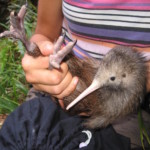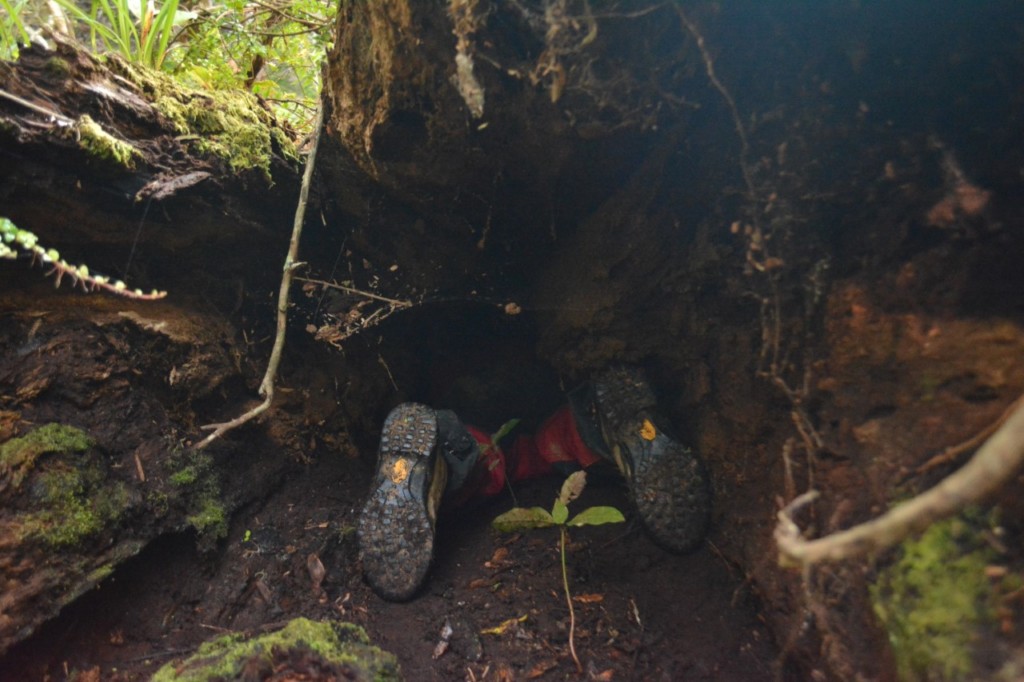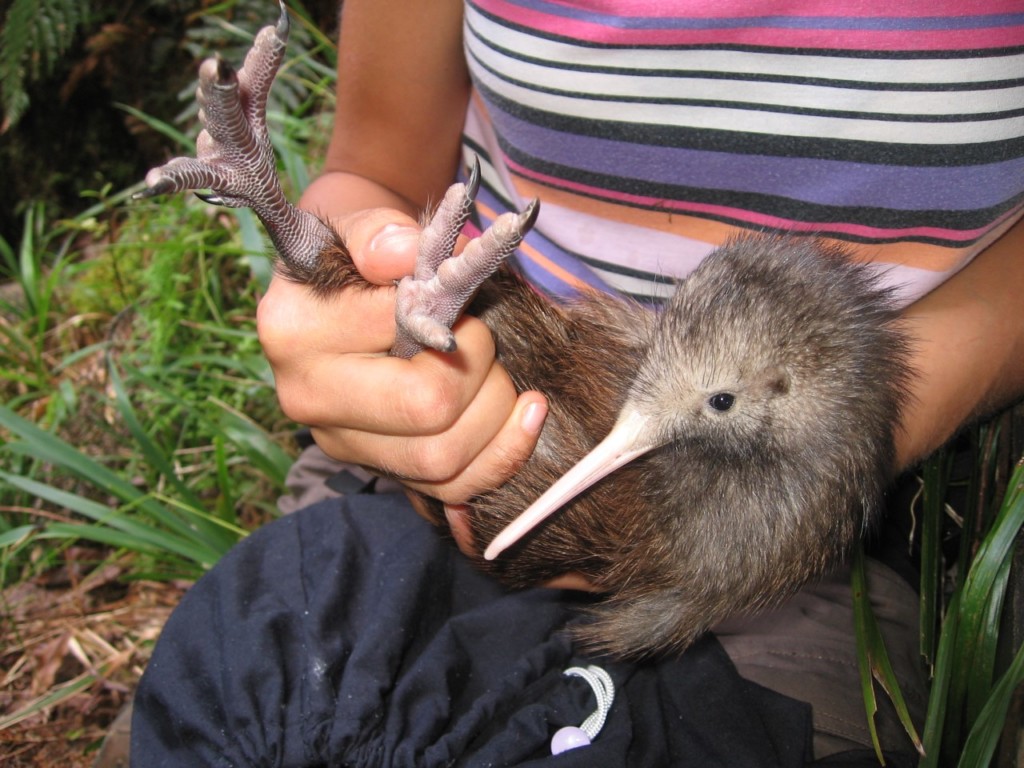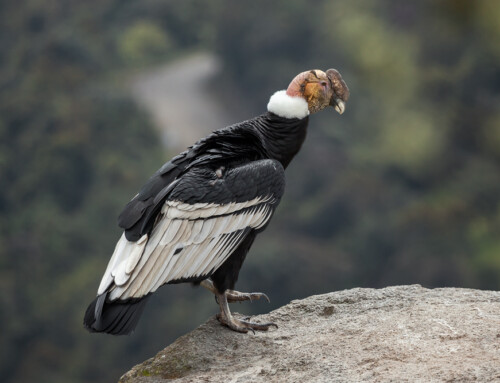LINKED PAPER
Gaps in genetic knowledge affect conservation management of Kiwi Apteryx species. Undin, M., Hills, S.F.K., Lockhart, P.J. & Castro, I. 2021 IBIS. DOI: 10.1111/ibi.12951 VIEW
 My first encounter with kiwi was as a volunteer for the Department of Conservation (DOC) in 2013. I was to accompany an experienced kiwi practitioner, go out in the evening to a known nest, wait until it got dark and the incubating dad left, watch her grab the chick, assist her while fitting a radio transmitter to its leg, maybe take a photo, and then watch her put the bird back. That plan was exciting enough, but, suddenly, this night became much more memorable when the practitioner’s arm turned out to be too short and I was asked to have a go at extracting the chick(s) from their deep burrow. I will never forget the two feisty fluff-balls in the light of my headtorch, or the feeling of their feathers – much more like the fur of the softest cat than bird feathers.
My first encounter with kiwi was as a volunteer for the Department of Conservation (DOC) in 2013. I was to accompany an experienced kiwi practitioner, go out in the evening to a known nest, wait until it got dark and the incubating dad left, watch her grab the chick, assist her while fitting a radio transmitter to its leg, maybe take a photo, and then watch her put the bird back. That plan was exciting enough, but, suddenly, this night became much more memorable when the practitioner’s arm turned out to be too short and I was asked to have a go at extracting the chick(s) from their deep burrow. I will never forget the two feisty fluff-balls in the light of my headtorch, or the feeling of their feathers – much more like the fur of the softest cat than bird feathers.
 Figure 1 The author crawling into a log to extract a kiwi. Photo: Florentine van Noppen
Figure 1 The author crawling into a log to extract a kiwi. Photo: Florentine van Noppen
Unfortunately, almost as vivid is my memory from just a few weeks later when the radio transmitters gave us mortality signals for both siblings. In unmanaged areas, less than one in 20 kiwi chicks survive, and, even in managed areas, an incursion of one single stoat, ferret, or dog can have devastating consequences (McLennan et al. 1996, Innes et al. 2010). Thus, naturally, the focus of kiwi conservation is pest eradication. For the ongoing conservation efforts, the five recognised kiwi species have been further split into 14 management units based on the detection of genetic differences combined with geographic distribution (Burbidge et al. 2003, Weir et al. 2016, Germano et al. 2018). This split has been done to emphasise the need to preserve kiwi and their diversity nationwide, and the goal is reaching and maintaining 2% annual growth for each of the 14 units independently.
We argue that this idea of managing genetic diversity by maintaining variation within while preserving differences between units is potentially harmful. All five kiwi species are non-flying and have had their distribution substantially reduced and fragmented. Thus, finding genetic differences between areas of current distribution is not surprising. We worry that the current policy risks leading to further differentiation between areas as well as the solidification of human-caused loss of gene flow. We are concerned that this can have negative consequences for the future persistence of kiwi, since genetic diversity is what will allow these birds to grow rapidly once pests are under control and adapt to our changing environment (Undin et al. 2021).
Thus, we conducted this review to emphasize that while we know a lot about kiwi genetics, we still do not understand how and why the management units differ genetically. We explain why this is the case, argue that elucidating the role of local adaptation versus random genetic drift is crucial for long-term sustainable kiwi management, and, lastly, we outline how such studies could be done. With this, we hope to shift the focus from maintaining genetic distinctness towards promoting (re)establishment of access to genetic diversity. Specifically, we hope to encourage reconsideration of the currently very restrictive policies around kiwi translocations.
 Figure 2 A seven to 14 day old kiwi chick – still small enough to be under constant threat from stoat predation – found together with their dad. The dad got his blood sampled, but this chick was too small. Photo: Lesley Baigent
Figure 2 A seven to 14 day old kiwi chick – still small enough to be under constant threat from stoat predation – found together with their dad. The dad got his blood sampled, but this chick was too small. Photo: Lesley Baigent
While this review focuses on kiwi and should have a direct impact on kiwi conservation, we hope that the wider conservation community regard it as a concrete case study highlighting widespread problems with conservation management, policymaking, and prioritisation.
Lastly, I would like to take the opportunity to thank Te Patukeha and Ngati Kuta Hapū and the Ngā Pae o te Māramatanga Kia Ārohi Kia Mārama for the support they have contributed to this work.
References
Burbidge, M.L., Colbourne, R.M., Robertson, H.A. & Baker, A.J. 2003. Molecular and other biological evidence supports the recognition of at least three species of brown kiwi. Conservation Genetics 4: 167-177. VIEW
Germano, J., Barlow, S., Castro, I., Colbourne, R., Cox, M., Gillies, C., Hackwell, K., Harawira, J., Impey, M., Reuben, A., Robertson, H., Scrimgeour, J., Sporle, W. & Yong, S. 2018. Kiwi Recovery Plan 2018–2028 Mahere Whakaora Kiwi 2018–2028
Innes, J., Kelly, D., Overton, J.M. & Gillies, C. 2010. Predation and other factors currently limiting New Zealand forest birds. New Zealand Journal of Ecology 34: 86-114. VIEW
McLennan, J., Potter, M., Robertson, H., Wake, G., Colbourne, R., Dew, L., Joyce, L., McCann, A., Miles, J. & Miller, P. 1996. Role of predation in the decline of kiwi, Apteryx spp., in New Zealand. New Zealand Journal of Ecology 20: 27-35. VIEW
Undin, M., Lockhart, P.J., Hills, S.F.K. & Castro, I. 2021. Genetic rescue and the plight of Ponui hybrids. Frontiers in Conservation Science 1:622191. VIEW
Weir, J.T., Haddrath, O., Robertson, H.A., Colbourne, R.M. & Baker, A.J. 2016. Explosive ice age diversification of kiwi. PNAS 113:E5580-E5587. VIEW
Image credit
Top right: © Lesley Baigent




